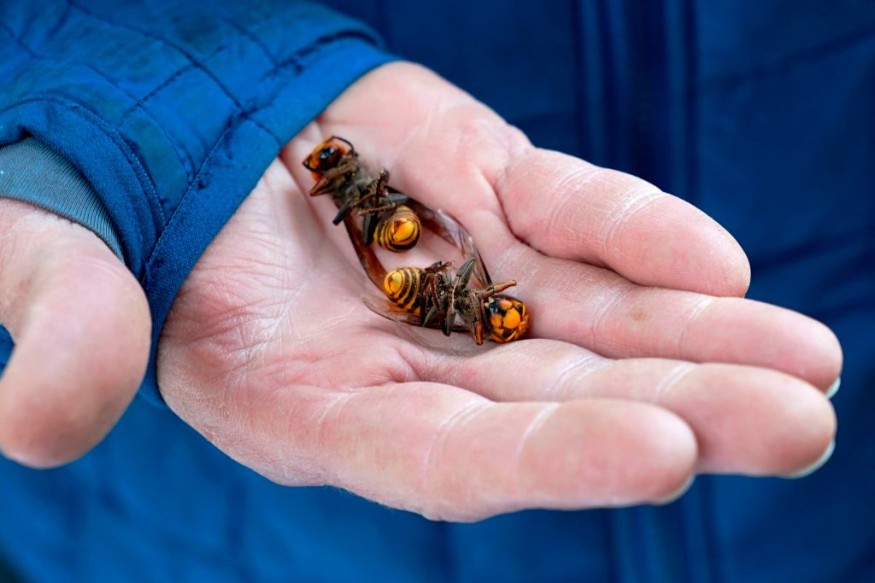Murder hornets are considered among the most invasive insect species in the United States. Among their favorite targets are crops that they fully destroy. In previous studies, attempts were made to stop such insects from pestering properties in the country.
Murder Hornet's Invasion in North America

This new research, led by scholars from California, found a solution that can easily eliminate the problematic Asian giant hornet, an insect commonly known as the 'murder hornet.'
The hornet, scientifically labeled as the Vespa mandarinia, often leaves a chemical compound called pheromones that attracts its potential mate.
The pheromones of the murder hornet also serve as a signal whenever the insect kills its prey. Through the properties of the chemical, the hornets can injure even humans. The toxic poison that they carry could be painful for people. Upon infliction, humans may suffer from kidney failure that might result in death.
The Asian giant hornet has a larger population that could be found in the vast regions of Japan. According to a report by DailyMail, others also house these deadly insects, including Vietnam, Thailand, South Korea, and China.
In recent years, North America was observed with increasing footprints of the murder hornet. The United States considers the insects as invasive species, but the exact arrival and origins of the hornets to the country remain unsolved.
Threats that the Asian giant hornets to the US include decreased endemic bee populations and the loss of agricultural revenue through the destruction of crops.
Despite being present in North America, the murder hornet seemingly jumped over Asia's neighbor Europe. Through the years after discovering the insect's presence in the US, the hornet's population has not been detected in the continent yet.
The study was led by James Nieh, a biological sciences expert at the University of California San Diego's Section of Ecology, Behavior, and Evolution.
ALSO READ : Wrasse First Thought As Different Fish Species Rediscovered in First-Ever Study in Maldives
Pheromone of Asian Giant Hornets Work as Traps
The Asian giant hornet, according to Nieh, does not belong in the common biodiversity of North America. The insect species harm the country's bee populations, which is enough reason to eliminate them, he continued.
The Asian giant hornet has enormous physiology, a characteristic that inspired its name. Queens of the Vespa mandarinia can reach a scale of up to five centimeters in length, while the male and female workers can reach a length between three to four centimeters.
Throughout their observations, the authors of the study found that the neural activity in the male hornets is much more active when they detect the pheromones of females.
The queen hornet's pheromone was discovered with three major components, including decanoic, hexanoic, and octanoic acids.
Through the data from these acids, the experts believe that the insects could be baited and trapped across large distances from their colonies by formulating the same pheromone content that hornets carry.
The approach is not much expensive, with Nieh saying that the tests could immediately proceed in larger places affected by the invasive species.
Nieh's team released the technique openly to the public instead of patenting their method for a quicker solution against the murder hornets. The authors hope others could utilize their established results to prevent the rapid spread of the Asian giant hornet colonies in their properties.
The study was published in the journal Current Biology, titled "Identification of giant hornet Vespa mandarinia queen sex pheromone components."
Check out more news and information on Biology in Science Times.
© 2025 ScienceTimes.com All rights reserved. Do not reproduce without permission. The window to the world of Science Times.











